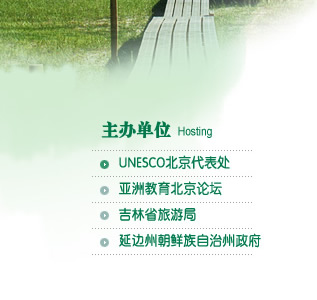








|
 |
 |
|
TOURISM, CULTURE AND EDUCATION – CAN WE ACHIEVE POSITIVE HERITAGE CONSERVATION OUTCOMES? PAPER ABSTRACT Many communities world wide have now become dependent on the revitalization of their heritage sites and associated cultural tourism activities to secure an economic future. This paper reflects on the lessons that have been learned where the pressure for development and tourism is great, threatening heritage conservation outcomes. Many Asian cities appear to be at a crossroads and a choice lies ahead. Either these cities can embrace an economic strategy that includes an objective of maintaining the special intrinsic character of place, or they can continue to develop at a rapid rate without any retention of traditional streetscapes. The Australian experience clearly highlights that heritage conservation makes good economic sense. The short paper identifies common issues and threats in the Australian and Asian context. It outlines that it is essential to assess and define the cultural significance of a place at the outset of any tourism and heritage conservation program and develop a long term vision that is connected to the aspirations and interests of the local community. The paper argues that it is essential for the ongoing survival of a community’s sense of well being to retain a unique sense of place and historic continuity in urban development. PAPER We are drawn as tourists to extraordinary new architectural masterpieces, the successful ones creating a strong sense of local identity and place, and with them, revived local economies. But are we managing to retain a strong sense of place at our heritage tourist sites? Here are some ideas in my short time available, about the common issues and threats at heritage sites where tourism is embraces as an economic basis for its future: Cultural Significance of Place – We must be clear about what is significant at a site, define the important elements and protect them. In Asia the assessment of what is culturally significant at a heritage site can be ad hoc. For sites bidding for world heritage listing, there are required frameworks (such as the 1972 World Heritage Convention) for formulating management structures. Sometimes these are undertaken rigorously such as the very recently successful inscription on the World Heritage Register of the Kaiping Diaolus in Southern China, but the use of a systematic approach is so often missing. In Australia, the Burra Charter assists this process, and there is the useful catch cry of “do as much as is necessary and as little as possible” and simple step by step processes to assist with decision making. Local charters in Asia, like the Nara Document (1994) or the Xian Declaration (2005) assist with conservation planning for the future. When the assessment of the cultural significance of a heritage tourist site is not undertaken at the time of preparing tourist management frameworks, this leads to inappropriate management decisions, and destruction of the authenticity of the site. Statutory protection and demolition control is critical to the effective management of a site. Planning ordinances must be formulated, and then adhered to – the absence of these leads to demolition of significant building buildings generally for short term profit. We also need to be aware of the many layers of significance of a site and protect these, and also manage the setting of the site. High conservation standards are required to ensure that simple repair works are not undertaken with cement mortar, plastic paints, or significant elements of buildings removed. Inappropriate new development must be prevented – with development guidelines in place to prevent out of scale projects, or incongruous facadism eroding the character of the streetscape. Planning schemes need to incorporate policies that control building heights, bulk and building styles so that inappropriate development does not destroy the character of the place. Regulations of corporate signage, are required to ensure that Fast food and other companies, who want to locate in tourist areas, only do so in an appropriate manner - otherwise they are not welcome!!. Inappropriate advertising dramatically impacts on the character of cities, particularly in heritage areas. Excessive visitor numbers allowing visitation numbers to exceed the carrying capacity of the site rapidly destroy a site – there are now manuals to assist with managing these issues. The Magao Grottoes in China have built replica caves to prevent wear and tear caused by large visitor numbers. The temptation to develop the site as a theme park, with reconstruction or new structures lacking authenticity and imposing “kitch ideas” from elsewhere must be avoided at all cost. Retention of local traditional ways of life, must be catered for, protecting the intangible as well as tangible heritage. These threats can result in outcomes which are not reversible - once gone traditional ways of life, and intimately scaled buildings can not be reinstated. What are the issues for the tourism industry itself? There can be a lack of understanding that tourists want authenticity - rather than a repeat of other tourist experiences from other destinations. Responsible tourism practices require that the industry strikes a balance between the economic development of sites and site maintenance. Reinvestment back into the site from the revenue raising mechanisms (such as entry taxes, ticket revenues) must occur – if this does not occur, (which is frequently the case), local communities do not share the benefits, nothing is done to reduce poverty through cultural tourism activities and the site itself deteriorates. Lack of effective interpretation can result in visitors learning very little about the cultural heritage significance of the site. The quality of goods for sale must be high, and should be locally made, so that there is creation of local enterprises with local economic benefits. So can we position tourism to respect and conserve the cultural heritage value of a place at the same time as allowing community and economic development ? – and how do we do this? Effective leadership and community support is essential to achieve good conservation outcomes– my experience is that without leadership, there is limited success. Education is critical across the community, particularly for women and children and develops local leadership skills. The unique stories of a place need to be passed on to the next generation together with an appreciation of the unique built environment. In the rapidly developing world city of Dubai, where tourism is booming, the city embraces modernity and technical excellence (and is now nearly completing the worlds tallest building) but also sees the importance of sense of place for its visitors. This shopping centre, is carefully modeled on Venice – so if you don’t have real heritage, there is value in creating it for economic benefits! But agencies such as UNESCO, the World Bank and Asia Local Heritage Trusts are all now actively involved in the retention of real built heritage within the Asian region. However, as the market economy framework is embraced in Asia, and tourism continues to increase, there is an urgency to protect traditional buildings and precincts before uncontrolled development overtakes them, not only in World Heritage Sites. Time is of the essence – once destroyed, such places and communities, together with their cultural legacy will be gone forever. It is essential for the ongoing survival of a community’s sense of well being to retain a unique sense of place and historic continuity in urban development. Elizabeth Vines |
版权所有 © 亚洲教育北京论坛 www.Asia-edu.org 2003-2009
Tel: +86 10 8497 3910 Fax: +86 10 8497 3710 Email: Office@asia-edu.org |